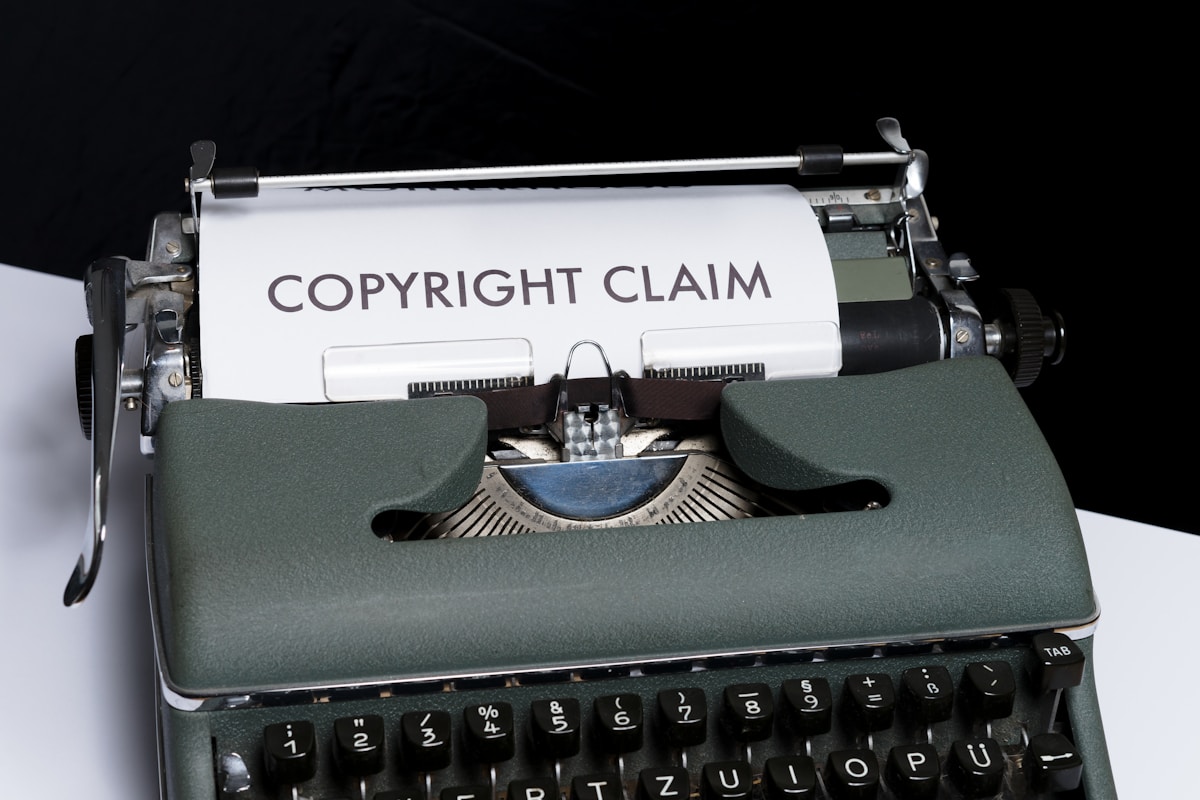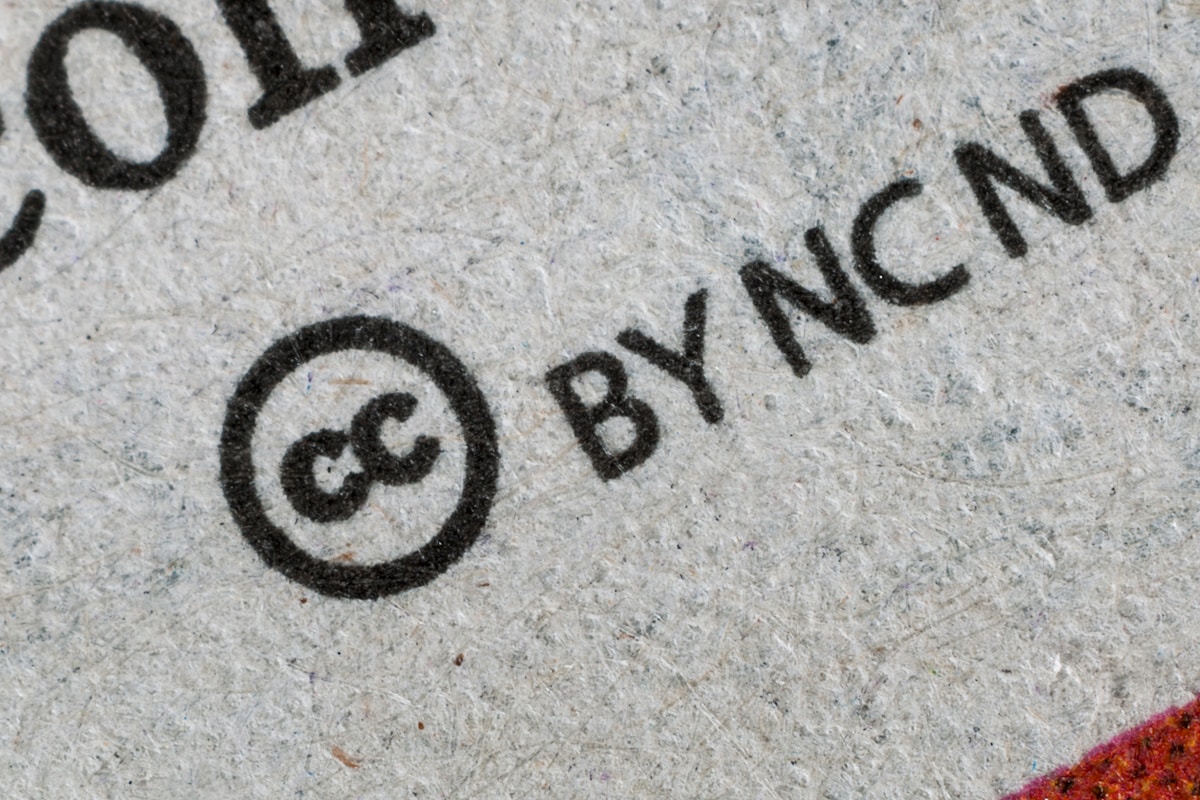Guardian Of Your Content: A Step-By-Step Guide To Copyright Your Blog
Guardian Of Your Content: A Step-By-Step Guide To Copyright Your Blog

In today's digital age, protecting your blog content is crucial. Whether you're a seasoned blogger or just starting, understanding the importance of copyright for your blog is essential. You can ensure your hard work remains protected by exploring the basics of blog copyright and learning to safeguard your content.
Understanding The Importance Of Copyright For Your Blog
As a blogger, you invest time and effort into creating original content for your audience. Copyrighting your blog gives you legal ownership and control over your work, preventing others from using it without permission. You should copyright your blog because it protects your intellectual property and allows you to monetize your content and build a reputable brand.
It's important to remember that copyrighting your blog doesn't mean you can't share your work with others. If you copyright your blog, it means that you have the final say in how it's used and can benefit from any opportunities that come your way. So, if you want to protect your hard work and make sure you're the one reaping the rewards, copyright your blog today.
Exploring The Basics Of Blog Copyright
Blog copyright refers to the legal protection of original content published on a blog. It encompasses written articles, images, videos, and other creative work the blogger produces. Understanding how copyright laws apply to blogs is essential for maintaining control over your intellectual property and avoiding potential legal issues.
Tips For Safeguarding Your Content - Copyright Your Blog
Protecting your content is crucial, especially in the digital age, where information can be easily shared and accessed. Here are some tips to safeguard your content:
- Understand and Use Copyright Laws - Familiarize yourself with copyright laws in your jurisdiction. The legal protection automatically applies to original works, but understanding the specifics can help you enforce your rights.
- Use Watermarks - Add watermarks to your images and videos to deter unauthorized use. Watermarks make it more difficult for others to claim or use your content without permission.
- Employ Digital Rights Management (DRM) - Consider using DRM tools to protect digital content. DRM helps control access, copying, and distribution of your digital assets.
- Clearly Define Usage Rights - Clearly state the terms of use for your content. It could be done through licenses, terms of service, or other legal agreements. Make it explicit what others can and cannot do with your content.
- Monitor and Enforce - Regularly monitor your content online. Use tools like Google Alerts or specialized services to track where your content appears. If you find unauthorized use, take appropriate action, such as issuing takedown notices.
- Use Secure Platforms - Host your content on secure platforms with robust security measures. It helps protect against hacking and unauthorized access.
- Enable SSL for Your Website - If you have a website, use SSL (Secure Socket Layer) to encrypt the data transmitted between the user's browser and your server. It helps protect your content and user data.
- Backup Your Content - Regularly backup your content to prevent loss due to accidental deletion, hacking, or other unforeseen events. Cloud storage services and external hard drives are good options for backups.
- Educate Your Team - If you work with a team, ensure everyone knows the importance of content protection. Educate them on copyright laws, usage policies, and measures to safeguard content.
- Update Security Software - Keep your software, including security software, up to date. Regularly update content management systems, plugins, and other tools to patch vulnerabilities and enhance security.
- Utilize Two-Factor Authentication - Enable two-factor authentication for your accounts, especially those associated with content distribution. It adds an extra layer of security to prevent unauthorized access.
- Consult Legal Professionals - If your content is critical to your business, consider consulting legal professionals specializing in intellectual property law. They can guide you on protecting your content and taking legal action if necessary.
Remember that these tips are general guidelines, and it's advisable to consult with legal professionals for advice tailored to your specific situation and jurisdiction.
The Fundamentals Of Copyright For Blog

Now that you understand the importance of copyright for your blog let's delve into the fundamentals of blog copyright.
What Is Copyright And Why Your Blog Needs It?
Copyright is a legal protection that gives you exclusive rights to your original content, including blog posts, images, and videos. If you copyright your blog, it can prevent others from using your work without permission and protect yourself from plagiarism and content theft.
Explaining The Legal Aspects Of Blog Copyright
In the blogging world, understanding the legal aspects of copyright is crucial. It's important to know what constitutes fair use, how to handle copyright infringement, and what steps you can take to enforce your rights as a content creator.
How To Copyright A Blog?
There are several key steps you can take to establish copyright for your blog:
- Create original content. Ensure that all the content on your blog is unique and not copied from other sources.
- Add a copyright notice. Include a clear copyright notice at the bottom of each page on your blog to inform visitors that your content is protected.
- Register with the U.S. Copyright Office. While not required, registering your blog content with the U.S. Copyright Office provides additional legal protection in case of infringement.
Creating A Copyright Policy For Your Blog
Now that you understand the importance of copyright for your blog, it's time to create a clear and concise copyright policy to protect your content. A copyright policy outlines the rules and regulations surrounding using your blog's content, helping prevent unauthorized use and infringement.
Crafting A Clear And Concise Copyright Policy
When crafting your copyright policy, make sure to clearly state that all content on your blog is protected by copyright law. Outline the rights you retain as the content creator, including the right to reproduce, distribute, display, and perform your work.
It's also important to address how others can use your content. Consider allowing limited use of your work, such as quoting or sharing with proper attribution. However, make it clear that any unauthorized use or reproduction of your content is prohibited and may result in legal action. Clearly outlining your copyright policy can protect your creative work and ensure that others respect your rights as the creator.
Incorporating Copyright Notices In Your Blog Content
Incorporating copyright notices in your blog content is important in establishing ownership of your work. Include a visible copyright notice at the bottom of each page on your blog, stating your name or company name, the year of publication, and a statement indicating that all rights are reserved.
Consider registering your blog content with the U.S. Copyright Office for added legal protection. It can help you if someone tries to infringe on your work, allowing you to take legal action if necessary. Additionally, consider using watermarks or digital rights management tools for any images or downloadable content on your blog to deter unauthorized use when copyrighting your blog.
How To Use Strikingly To Copyright Your Blog?
Strikingly is a website builder platform that allows users to create websites, including blogs. However, it's important to note that using Strikingly does not provide copyright protection for your blog content. Copyright protection is automatically granted to original works when created, and it exists independently of the platform you use to publish your content.
Here's how you can leverage Strikingly for your blog and some additional steps you can take to reinforce copyright protection:
Using Strikingly For Your Blog
- Create Your Blog - Sign up for a Strikingly account and use their website builder to create and customize your blog.
- Choose a Unique Domain - Select a unique and memorable domain name for your blog. You can use a free Strikingly domain or connect a custom domain.
- Customize And Design - Customize the design and layout of your blog using Strikingly's templates and tools. Make your blog visually appealing and user-friendly.

Image taken from Strikingly
- Regularly Backup Your Content - Strikingly provides a backup feature with the clone option, so you regularly back up your blog content to prevent data loss.

Image taken from Strikingly
Additional Steps For Copyright Protection
- Add a Copyright Notice - Include a copyright notice on your blog. This notice typically includes the copyright symbol (©), the year of publication, and the name of the copyright owner. For example: © 2023 Your Name.

Image taken from Strikingly
- Terms of Service and Usage Policies - Use Strikingly's tools to create and display clear terms of service and usage policies on your blog. Outline the terms under which visitors can use and share your content.
- Register Your Copyright - While copyright is automatic, registering your blog content with the relevant copyright office (e.g., the U.S. Copyright Office) provides additional legal benefits. It establishes a public record of your ownership and can be useful if legal action becomes necessary.
- Watermark Your Images - If your blog includes images, consider watermarking them to discourage unauthorized use. Strikingly allows you to add images easily.

Image taken from Strikingly
- Monitor Your Content - Regularly monitor your blog content using tools like Google Alerts. If you find instances of unauthorized use, take appropriate action.
- Seek Legal Advice - If your blog content is particularly valuable or if you have concerns about infringement, consider seeking legal advice from a copyright attorney.
Remember, while Strikingly can help showcase your content, protecting your blog's copyright rests with you. Be proactive in asserting your rights and take steps to deter and address unauthorized use of your content.
How To Copyright Your Blog Content?
Now that you understand the importance of copyright for your blog, it's time to learn how to copyright your content. Registering your blog content for copyright protection is crucial in safeguarding your intellectual property. The process involves submitting your work to the U.S. Copyright Office, which will be officially recognized and protected under copyright law.
Registering Your Blog Content For Copyright Protection
To copyright your blog, you can start by visiting the official website of the U.S. Copyright Office and filling out an application for registration. You'll need to provide information about yourself as the creator and describe the content you want to copyright. Once you've submitted your application to copyright your blog and paid the necessary fees, your blog content will be officially registered and protected under copyright law.
Understanding Fair Use And Copyright Infringement
It's also important to familiarize yourself with fair use and copyright infringement laws regarding blogging. Fair use allows for limited use of copyrighted material without permission from the original creator, but specific guidelines must be followed. On the other hand, copyright infringement occurs when someone uses copyrighted material without permission, which can result in legal consequences.
It's always best to avoid caution when using copyrighted material in your blog posts. If you need clarification on whether using a particular image or quote falls under fair use, it's a good idea to seek permission from the original creator. Remember, it's better to be safe than sorry regarding potential legal issues related to copyright infringement.
Best Practices For Copyrighting Blog Articles And Images
Regarding blog articles and images, there are best practices that can help ensure they are properly copyrighted. Some key steps include adding a copyright notice at the bottom of each page or post on your blog, using watermarks on images to discourage unauthorized use, and considering Creative Commons licenses for sharing certain content with specific usage rights.
Enforcing Copyright Protection For Your Blog
Now that you have taken the necessary steps to copyright your blog, it's important to understand how to enforce that protection. Dealing with copyright infringement can be challenging, but you can address this issue in several ways.
Dealing With Copyright Infringement
- Monitor your content regularly to ensure no one uses it without permission.
- Send a cease and desist letter to the infringing party.
- Consider taking legal action if the infringement persists.
Taking Action Against Plagiarism And Content Theft
Plagiarism and content theft can harm your blog's reputation and affect your SEO rankings. Here are some steps you can take to address these issues:
- Use plagiarism detection tools to identify stolen content.
- Reach out to the offending party and request they remove the stolen content.
- Consider filing a DMCA takedown notice if necessary.
Utilizing Legal Resources For Protecting Your Blog Content
When it comes to protecting your blog content, it's essential to have legal resources at your disposal. Here are some options you can consider:
- Consult with an attorney who specializes in intellectual property law.
- Join organizations such as the Copyright Alliance for additional support and resources.
- Stay informed about changes in copyright laws and regulations through reputable legal sources.
Maintaining And Updating Your Blog Copyright

Now that you've taken the necessary steps to copyright your blog, keeping your protection up to date is important. Here are some key strategies for maintaining and updating your blog copyright:
Periodic Review Of Your Copyright Policy
Regularly review and update your copyright policy to ensure that it reflects any changes in your content or the laws surrounding copyright. Consider adding new sections or clauses to address emerging issues in the digital landscape, such as data privacy and content sharing. Ensure your policy is easily accessible on your blog to familiarize visitors with your copyright terms.
Consider adding a clear notice at the bottom of each blog post reminding visitors that your content is protected by copyright. It is a gentle reminder to anyone wanting to use your work without permission. Additionally, including a contact email or form for those interested in obtaining permission to use your content can make it easier for others to reach out and request proper authorization.
Keeping Up With Changes In Copyright Laws
It's important to understand the nuances of copyright law when protecting and sharing your content. Fair use and public domain are two key concepts to grasp, as they can impact how you use and distribute your work. Educating yourself on these exceptions can ensure that you are protecting your content while also being able to share it in ways that comply with copyright regulations.
Stay informed about any changes in copyright laws that may impact your blog, especially if you operate in multiple jurisdictions. Consider consulting legal resources or professionals specializing in intellectual property law to ensure you comply with all relevant regulations. Educate yourself about fair use, public domain, and other exceptions to copyright law that may affect how you protect and share your content.
Ensuring Ongoing Protection For Your Blog Content
Watermarks for images can help protect your original content from being used without permission, especially if you are a photographer or artist. Additionally, using DRM software for downloadable content such as ebooks or music can prevent unauthorized sharing and distribution of your work. These additional security measures can protect your intellectual property and ensure you control how it is used and distributed online.
Regularly monitor your blog for potential infringement or unauthorized use of your content. Utilize tools and services offered by platforms like Strikingly to track and protect your intellectual property online. Consider implementing additional security measures such as watermarks for images or using digital rights management (DRM) software for downloadable content.
Conclusion
When protecting your blog content, implementing effective copyright strategies is crucial. Understanding the basics of copyright and taking proactive steps to establish and enforce copyright protection can safeguard your blog from potential infringement and theft.
Strikingly offers robust features that can help maximize copyright protection for your blog. From incorporating copyright notices in your content to utilizing built-in tools for registering your blog content for copyright protection, Strikingly makes it easy to secure your intellectual property and copyright your blog.
Crafting a robust copyright policy is essential for securing the future of your blog. Clearly outlining your rights as a content creator and specifying how others can use your work can help you establish guidelines that protect your intellectual property and ensure that your blog remains valuable.
